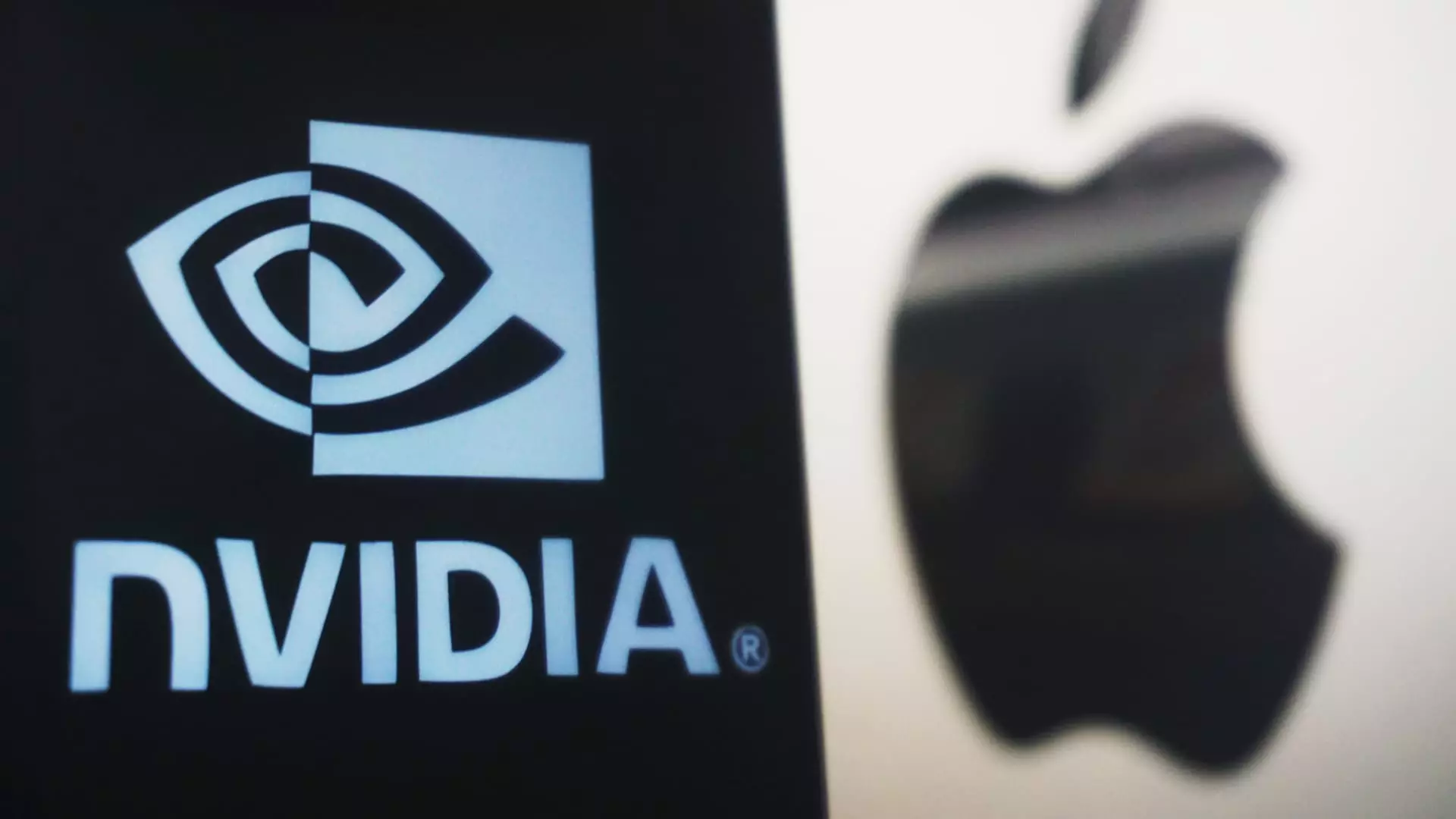The financial landscape can be likened to a grand orchestra—each economy plays its part, and when two giants like the United States and China find respite in their tariff war, investors begin to cheer like an approving audience. Recently, the cessation of reciprocal tariffs sparked a rush in global technology and chip stocks, igniting renewed optimism in markets battered by adverse trade relations. However, while this temporary hiatus is momentarily soothing, it is critical to view it through a lens of skepticism.
The rally initiated when both economic powerhouses decided to press pause on punitive tariffs offers a flicker of hope amidst the turmoil of trade deficits and supply chain disruptions. The potential for growth is undeniably tantalizing, particularly for semiconductor heavyweights like Nvidia and AMD, both of which saw their stocks rise as investors cheered the easing of economic tensions. But is this euphoria justified, or merely an investor’s mirage in a complex and unpredictable desert of fiscal uncertainty?
A Fragile Truce in a Fluid Landscape
While stock surges for tech stalwarts like Apple and Amazon hint at recovery, we must acknowledge the fragility of the circumstances. This so-called truce is not a blanket resolution but rather a band-aid over a deep economic wound. Nvidia may be facing a 4% bump now, but restrictions on its ability to ship chips to China loom ominously over the company. The investor optimism surrounding AMD and Broadcom raises eyebrows; is this a harbinger of a brighter future or a rush to quick profits with risks overshadowing the reward?
Moreover, the notion of temporary relief seems to understate the complexities involved in U.S.-China economic relations. The intertwined destinies of these two countries evolve continuously, often dictated by policy changes that can swing with unpredictable volatility. The current bullish sentiment may fuel a race for tech stocks, but an astute investor must differentiate between short-term gains and sustainable growth.
Apple’s Tariff Toll and Market Vulnerability
Tech giants are uniquely positioned in this narrative, balancing on a tightrope of reliance on Chinese manufacturing while facing escalating pressures from policy-makers. Apple stands as a case study: with a staggering 90% of its iPhones produced in China, the financial burden of potential tariffs could add up to $900 million for just one quarter. Despite the surge in share prices, this looming financial setback casts shadows over the company’s future.
Apple’s move to raise production in alternate locations such as India showcases a strategic pivot, but does it bushel up genuine growth potential or merely signal a survival instinct amidst economic adversity? The tech equities may be enjoying a short-lived surge, but the careless investor should reconsider the inherent vulnerabilities in proximity to volatile markets.
A Broader Economic Perspective
The enthusiasm radiating from tech stock rallies does not operate in a vacuum. U.S.-listed Chinese tech firms, including Alibaba and JD.com, also appeared buoyed by the perceived thaw in relations. Their stock rises further complicate the narrative; although they may flourish now, they remain vulnerable to the whim of shifting political tides. Any rollback in tariff negotiations could result in re-invigorated market pressures, reprising an older, grim story of losses.
Investors tend to romanticize the idea of a “broader deal” that would cure all the ills of a tense economic relationship. Daniel Ives of Wedbush Securities may optimistically forecast record highs for tech stocks as the negotiations unfold, but this reveals a dangerous complacency. Quick gains should not overshadow the longer-term structural issues dictating this market.
The Road Ahead: Cautious Optimism or Reckless Abandon?
The recent developments in U.S.-China trade negotiations offer a shimmer of hope but imbed substantial insecurity in the very fabric of global markets. As technology stocks rise amid a ceasefire, the question that must linger in every investor’s mind is clear: Are we building a solid foundation for growth or merely patching cracks in an old wall? Caution may well be the best strategy as we navigate this moment, especially considering the possibility that today’s gains may not guarantee tomorrow’s success. The orchestra of economies plays on, but are we merely applauding an intermission?

